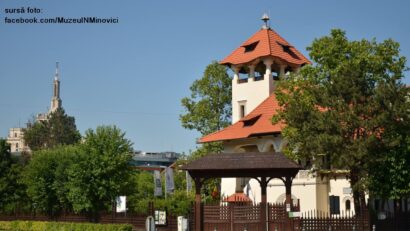Civilization of salt in the Carpathian area
Salt has been an extremely coveted commodity since ancient times

România Internațional, 06.05.2023, 12:01
Compared even today to white gold, salt has been an extremely coveted commodity since ancient times, and regions rich in deposits gained an importance directly proportional to its value. This is also the case of the Romanian area, which has always been considered home to the largest salt deposits in Europe. Valerii Kavruk, manager of the National Museum of the Eastern Carpathians in Sfântu Gheorghe, told us a bit about the history of salt mining on the current territory of Romania:
“The serious, systematic concern for the exploitation of salt on the territory of Romania dates back to around 6050 BC. Of course, compared to other countries in Europe, at this moment the earliest age of salt exploitation in Europe is that of Romania. Very soon after this date, around 6,000 BC, we have somewhat later remains in southern Poland, near Krakow, and in Bulgaria, in the north-east, on the territory of todays Provadia. But these exploitations would appear a few centuries after those in the Romanian space. Moreover, in the areas with the oldest salt mines, salt ores are still exploited today, such as the rock salt deposits located on the surface of the soil, especially in the counties of Prahova, Buzău, Vrancea, and in the intercarpathian space at Praid. But the most widespread saline formations that man could exploit without modern technical equipment were the saltwater accumulations such as those in Bucovina and Subcarpathian Moldova.”
In the intra-Carpathian area, throughout the Maramureș Depression, there are hundreds of places where water springs from the ground. Also in Transylvania, most of the salt water springs are located along the Carpathians. And since ancient times, wood accompanied the exploitation of salt, developing a specific civilization in the respective regions. Valerii Kavruk has more:
“Most of the time, when we talk about antient times, we very rarely come across wood, because wood, being an organic material, is very perishable. During archaeological excavations if we find wood, we find it only in carbonized form, that is, a kind of coal. And wood is practically destroyed by microbes. In areas rich in salty soils or in salty waters or muds, optimal conditions are created to preserve this wood as it was thousands of years ago. In some areas, especially in Transylvania, where layers were created on the site of salt mining, and there are substantial deposits of mud, many wooden installations and tools were preserved. This does not mean that people did not use something else, nor does it mean that such structures and wooden objects did not exist elsewhere. It is only a coincidence that these conditions were met and that wood was preserved. Valerii Kavruk who, for several years, has been leading the research at the Băile Figa site, near the city of Beclean, Bistrița-Năsăud county, has also told us that in most arecheological sites where there used to be salt mines, traces of wood were found.
“There, a salt deposit of 3 meters thick has formed above the salt deposit. In this layer of mud, thousands of objects and traces of wooden structures have been preserved, which were made during the exploitations that started around 3500 years BC. Currently, there is nowhere in Romania as much wood from prehistoric times as there is in a single site at Băile Figa. Certainly, such wooden structures and objects are also found elsewhere, but at Baile Figa we know them better, because for now it is the only place where systematic archaeological excavations are carried out in one of these sites.
Wood is one of the few materials that is preserved very well in a salty environment, so various structures have appeared over time, also discovered at Băile Figa. One example would be the oak retaining fences built on the lands from which the silt was taken to reach the salt rock as well as the wooden galleries used inside the mines. (MI)






























